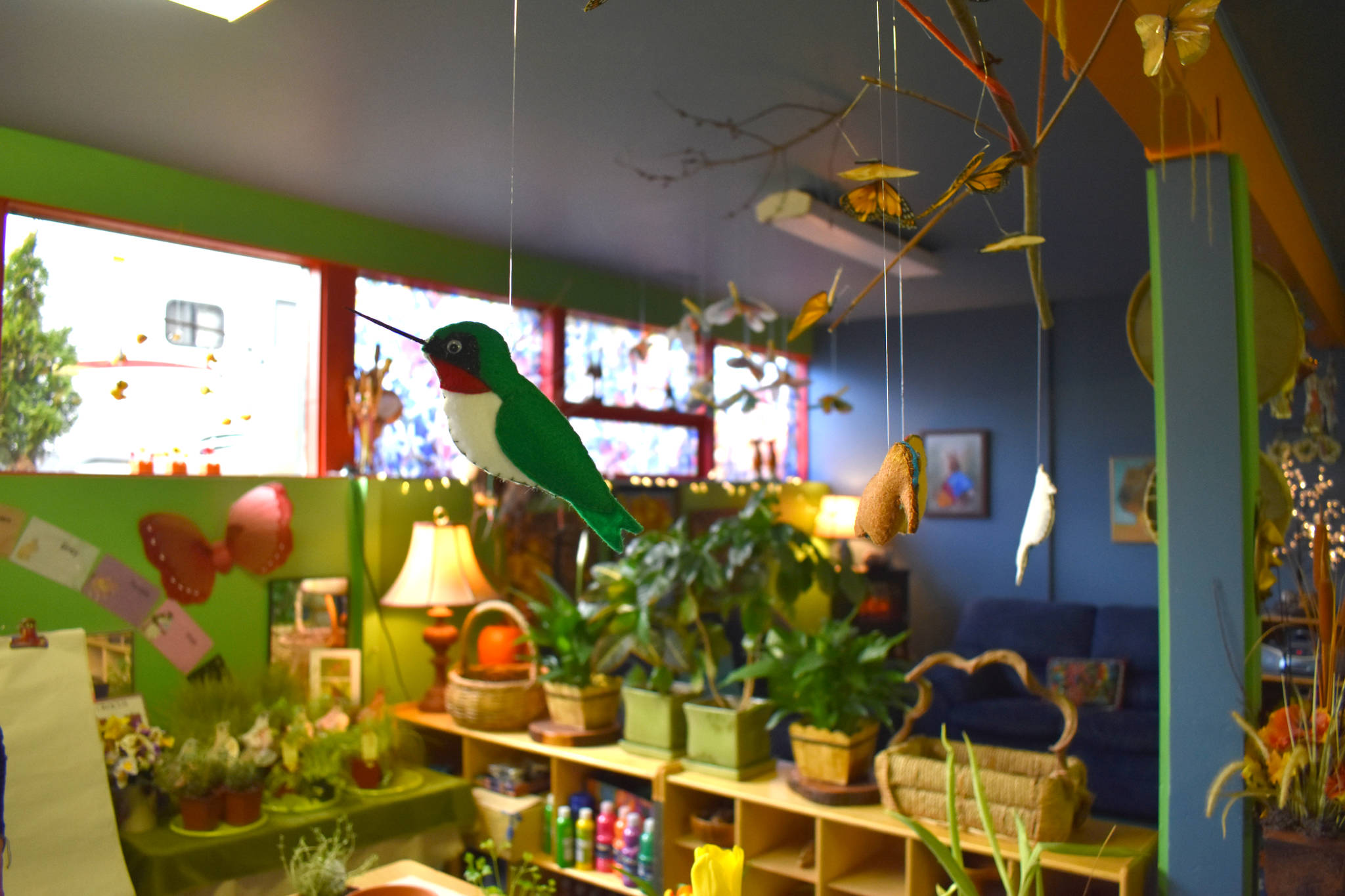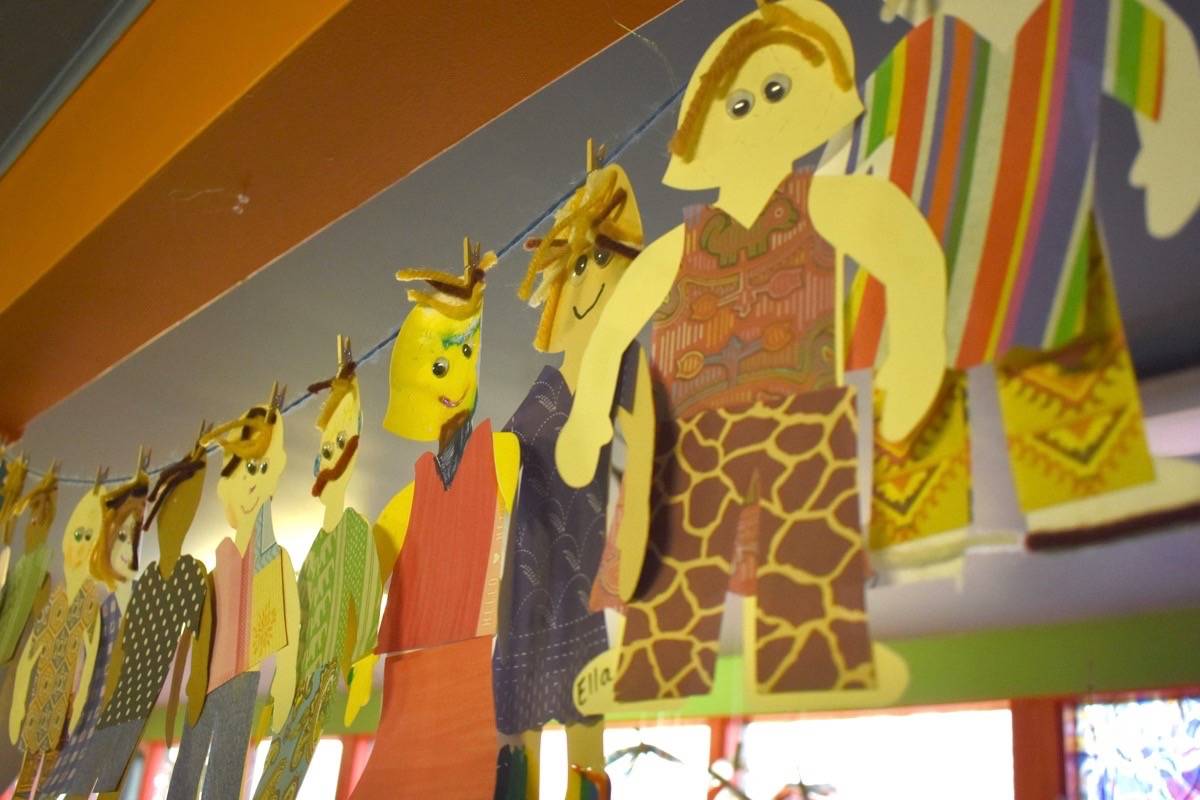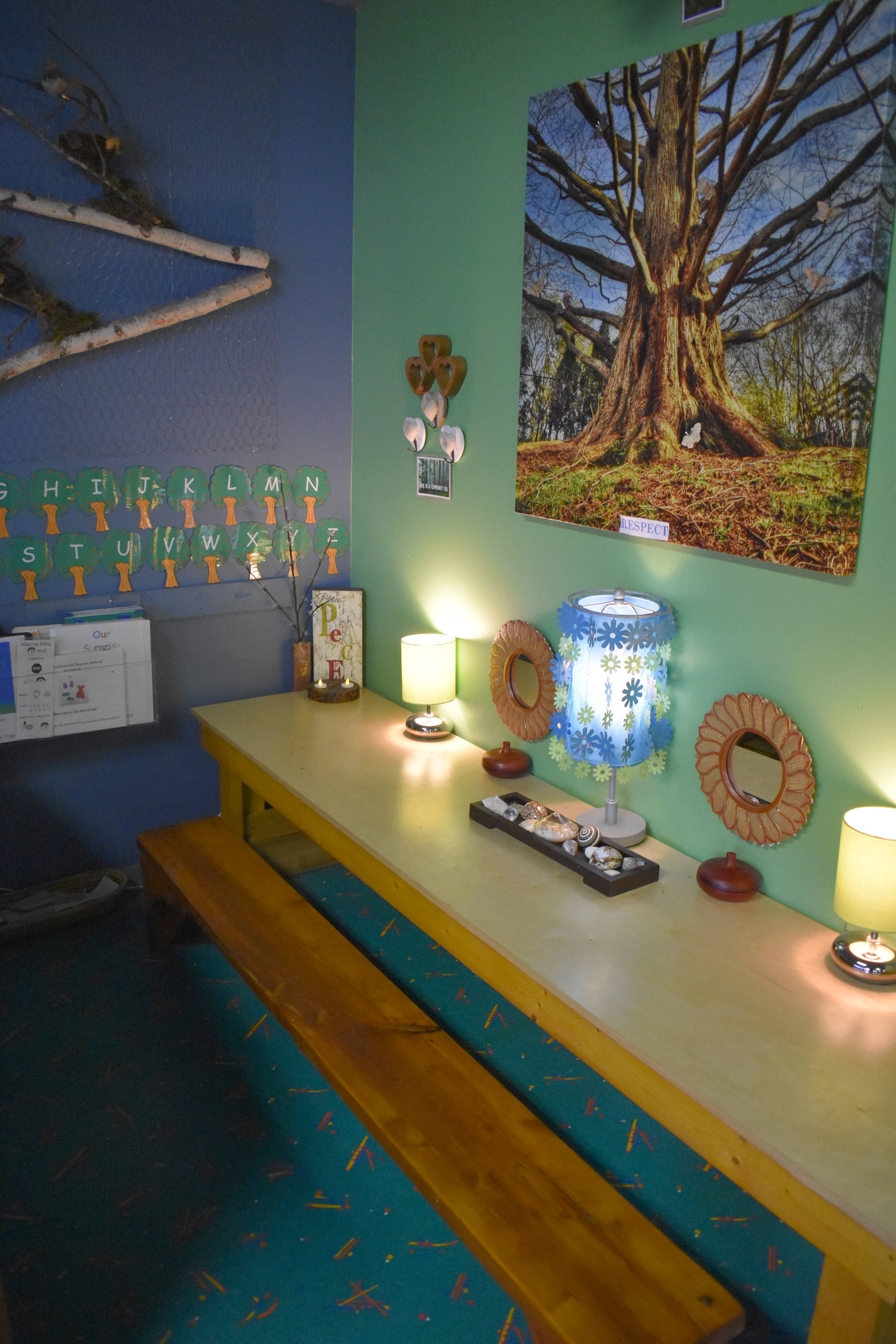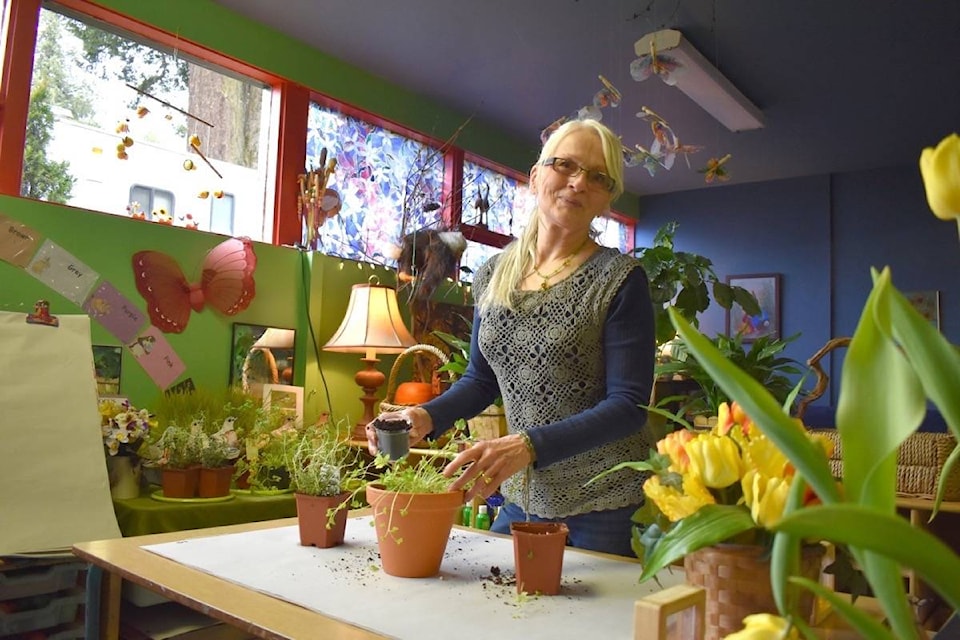Step down the stairs and your senses are overwhelmed by colourful walls, artistic creations and musical instruments dangling from the walls and ceiling, the sounds of birds chirping or Mozart playing in the background.
What initially was a space with bright yellow walls has been turned into a natural sanctuary, a place as close to nature as one can get while still inside. This is where Lousha Angel, an early childhood educator for 30 years, has spent the past four years building the licensed Hope Preschool and Daycare Centre at 310 Queen Street.
“I’ve been in a lot of facilities over the years and basements were the worst that I could ever imagine a child spending time in,” she said.
“In a perfect world, I would love to be in the middle of a forest. So I wanted to bring a sense of ‘we are part of nature’ even though we are in a basement.”
She works at this by painting the walls greens and blues, colours found in nature that also promote creativity.
Students get to take part in the life cycles of animals: an eagle cam is set up to monitor nesting bald eagles, caterpillars are brought in and released into nature once they become butterflies, students watch chicks hatch from eggs incubated here. A worm compost is housed next to a grass growing experiment.
A lot of the work here is focused on getting kids to use their imagination and interact with each other, skills many haven’t yet developed.
“You’d be surprised at how many children don’t know how to use their imaginations really well. That’s why we have an arts program and a nature program, because we’re trying to draw back from materialism, draw back from electronics and iPads and video games, and go back into simple,” she said.
There is a space in the facility called the loose parts area: different shapes and sizes of wood pieces, tunnels and pipes are laid out.
“We’ve got some boards here, we’ve got some sticks here, we’ve got some mud and we’ve got some blocks. What are we going to do, what are you going to create?”
The loose parts area comes from the Reggio Emilia philosophy of early childhood learning. Angel combines this with Waldorf and Montessori philosophies in her nature-based program.
“We’re not just focusing on one way to do things, but we call it the hundred languages of children. Children learn in a hundred different ways,” she said.
The centre has a range of programs: nature, artistic expressions, music, literacy, outdoor and garden, community connections and a social program which combines yoga, emotional awareness, mindfulness and empathy.
The music program has already shown success in improving speech and literacy, Angel said, citing one child who came to the centre not speaking and another who was learning English as a second language. Both are now speaking.
Special needs children have also prospered in the program, Angel added.
“We’ve seen huge changes just because of the fact that they can express themselves so often through art everyday, so often through music everyday, that we connect with nature everyday. And it just seems to open these children up,” she said.
A corner in the space, called the peace corner, looks like a child-sized yoga studio. This is the space students go to self-calm and spend time alone.
“It’s not like punishment, it’s more like learning to manage emotions and feelings,” Angel said.
Students are encouraged to understand the energy they are bringing into the space — red zone energy is for outside play, green zone for inside. A mirror is set up on the entrance to the loose parts area, students pause here to look at their own face and take a breath, making sure they match their energy to the space they’re coming into.
The holistic learning model Angel is creating is influenced by her 10 years spent teaching in the First Nations communities of Boston Bar, Chawathil and Spuzzum.
“All of the seasons, the culture, nutrition, things that were relevant to families, things that were relevant to what children were experiencing — what was going on outside in the world, out in nature, was also brought in. And that really helped me to understand how to connect children to real life, real learning and hands-on experiences.”
The 10 plus hour days running the centre are not something Angel whines about, quite the opposite as she finds she gets energy from doing what she loves.
“I feel so passionate about children being in environments that are aesthetic and nurturing and inviting and I thought I can’t retire yet, I have to do something,” she said about her decision to put her retirement plans on hold to run the centre.
She hopes the model she’s created here inspires other early learning programs in the community to adopt similar ideas.
Is there more to this story?
news@hopestandard.com
Like us on Facebook and follow us on Twitter



